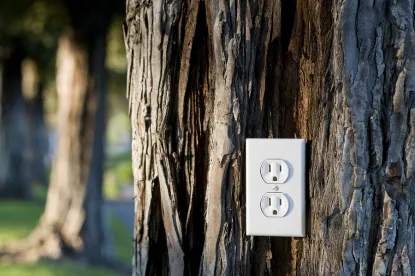A biweekly update on blockchain technology applications, distributed energy resources, and other innovative technologies in the energy sector.
Sunrun and SCE Partner for Residential Storage Virtual Power Plants
-
On 16 June 2020, Sunrun Inc. (Sunrun) and Southern California Edison (SCE) announced a partnership to launch one of the first U.S. residential energy storage virtual power plants. The partnership will allow up to 300 residential customers to take part in the distributed solar-plus-storage system by networking Sunrun’s Brightbox solar and battery systems across Southern California to provide peaking capacity.
-
Sunrun is currently enrolling customers into the program, which is expected to operate until mid-2021. Homeowners will earn a $250 incentive for participating in the program, and Sunrun will manage and dispatch the networked energy to the grid when SCE calls an event to meet local grid operational requirements. Although a handful of other utilities have instituted bring-your-own-device offerings throughout the United States, SCE hopes the program will encourage its customers to provide self-generated power to the grid.
New Advancements in Co-Located Storage Could Spur Development of Wind Projects
-
Recently, Oscilla Power, Inc. released the results of its investigation of the significance of energy storage when combined with wave energy generation. Oscilla Power, Inc. is a U.S.-based company focused on research and development of the wave energy industry. This study found that when storage systems are co-located on site of a large-scale wave farm, increased wave power and energy quality can be realized. The research notably found that the amount of storage necessary to attain grid-quality power was much lower than a wind or solar project of comparable size, meaning lower overhead storage costs.
-
Oscilla Power’s investigation results come in tandem with the company’s announcement that it will be working with the Indian State Government of Kerala and the Indian Union Ministry of New and Renewable Energy to establish a wave energy generation unit pilot project off the Vizhinjam Coast, located on the southern tip of India. The pilot project will involve the installation of a floating wave plant station capable of generating 150 KW. If the project proves successful, then Kerala’s government may set up a 1 MW wave energy plant off the Vizhinjam Coast and up to a total of 10 separate wave energy plants state-wide.
Fluence Rolls Out Innovative Battery Storage Component
-
On 16 June 2020, Fluence Energy (Fluence) commenced the launch of its sixth generation integrated grid storage product, accepting an 800 MW roster of orders. The new GridstackTM System has a rate alternative current power capacity from 2 MW to 500+ MW with a discharge duration of up to six hours. Utilizing advanced lithium ion sealed cells, the battery is designed to last a lifetime of up to 25 years and is operable in climates ranging from -40°C to 55°C. The 10 foot by 10 foot storage system also deploys with new software offerings from Fluence to control individual system operations in real time, but battery control is not exclusive to Fluence software.
-
The battery storage system is unique due to its easily configurable and highly scalable nature. The battery, also known as the “Fluence Cube” multiple units of the battery can be deployed to maximize efficiency and reduce implementation risks, while providing consistency across multiple locations. The Fluence Cube features easily configurable components that allow clientele to adjust to specific market conditions.
Researchers Develop Photocatalyst to Separate Hydrogen from Water Using Ultraviolet Light
-
Researchers at Shinshu University have developed a photocatalyst that uses ultraviolet light to split water into hydrogen and oxygen at a quantum efficiency of close to 100 percent. The researchers used aluminum-doped strontium titanate as a photocatalyst and rhodium and cobalt-oxide as co-catalysts for hydrogen and oxygen, respectively. This combination of photocatalyst and co-catalyst materials succeeded in creating the most efficient conversion light to hydrogen so far observed.
-
Hydrogen stands as a promising sustainable energy source because it is energy dense and produces only water when burned. If hydrogen could be produced in a sustainable and renewable manner, it could potentially replace fossil fuels. One potential way of sustainably producing hydrogen is to use photocatalysts to harness the energy of the sun to split hydrogen from water.
-
Efforts to harness solar power to produce hydrogen have been hindered by the inefficient conversion of light to hydrogen which characterized most other hydrogen photocatalysts. While currently limited to ultraviolet light rather than direct sunlight, the highly efficient conversion of light to hydrogen achieved by the Shinshu University researchers suggests that more efficient photocatalytic production of hydrogen may be on the horizon.





 />i
/>i

